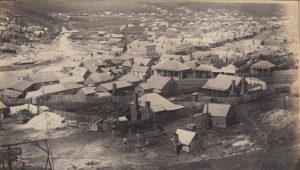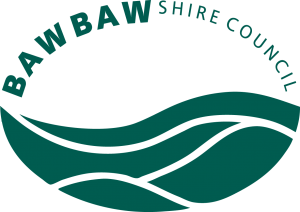Hepburn Shire has a rich cultural history which began with the Traditional Owners and has been enriched by migration during Victoria’s gold rush era. The Dja Dja Wurrung people are the Traditional Owners of the land which includes the Hepburn Shire and are the original inhabitants of the region and strongly connected to their Country today. Dja Dja Wurrung Country incorporates a large portion of land in the central region of Victoria between the Avoca and Loddon Rivers.
The town of Creswick was named after the Creswick brothers, John and Charles who had taken up a pastoral run on what is now known as Creswick Creek. The gold rushes to Ballarat in 1851 led to some miners venturing north to try their luck with gold being discovered along Creswick Creek in 1852. From then until 1854 the area was rushed by thousands of miners and at one stage the fledgling town of Creswick claimed to have a population of 25,000. However this instant wealth from easily collected gold soon dissipated and these miners moved on to more golden pastures.

As a result, the area around Creswick was left to the operations of the deep lead mining companies, who by 1872 had discovered gold deep beneath Broomfield near Creswick. This led to new mines being sunk along the rich pastoral valleys and the consequent spoil being mounded up in huge piles, which are still visible today. These mines, known as the Berry Deep leads tunnelling into the old river beds buried deep underground produced phenomenal amounts of gold. The Madame Berry mine alone produced 25,000 ounces of gold.
The fortunes of the town of Creswick initially focussed on the production of gold and with gold production drying up it somewhat stagnated. However, much of the early pastoral holdings were taken up by small farmers, many of them previously miners. The result was this area became one of the earliest centres of small and diversified farming in the state.

Madame Berry Company’s No. 1 shaft at Creswick, 1887 – FW Niven (artist), National Library of Australia
Creswick has been closely tied to the fortunes of Ballarat. Firstly, as a result of the deep lead investors who had initially established their credentials in Ballarat and moved their expertise to the deep lead mines around Creswick. Later it was influenced by the railway connection with Ballarat. Not only was there a web of lines constructed linking the small towns in the district, but the metalworking skills of the miners became important for the expansion of railway activity in Ballarat during the 1880s.
Creswick can also claim a significant role in the development of the Australian labour movement and its political arm. W G Spence was an early mining organiser who rose to political prominence through the establishment of the Australian Worker Union and John Curtin, the Second World War period Prime Minister, was active in the strong local anti-conscription movement before moving on to significant union and political positions in both Melbourne and Perth. Jim Scullin, another ALP Prime Minister, worked around the district during his youth.
In the Daylesford/Hepburn Springs area, gold was discovered in 1851 at Wombat Flat. Prior to this the area had been settled by pastoralists who had taken up vast tracts of land and in turn had displaced the local aboriginal population, the Dja Dja Wurrung.
Whilst mining started at Wombat Flat, it soon moved around and by 1855 the Daylesford diggings spread across a vast area of the old Shire of Daylesford and Glenlyon. In the 1860s the Daylesford town centre was based in Vincent Street. Today, most of the old centre on the flat is submerged beneath Lake Daylesford.
Wombat Hill is the major natural feature of the area and was originally identified as the site of the government camp and police reserve. It’s gazettal as a site for public gardens didn’t occur until 1863. Today this is one of the most significant regional botanic gardens in Victoria.
Like every large digging, Daylesford had its share of French, German, Danish and Austrian diggers working alongside those from the British Isles. However, by 1859 the most significant group were the Chinese with the mining register figures from that year showing that one third of the total miners were Chinese.




















